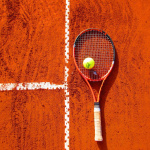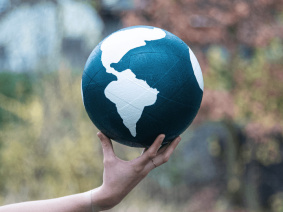What could be more iconic than the clay courts of Roland Garros? These tennis courts have seen careers made and unmade, they have hosted the greatest champions of this discipline. This international tournament takes place every year between the last week of May and the first week of June. 15 days of intense competition that excites sports fans.
You may be following this new edition assiduously, hoping to see the Blues triumph, or supporting the favorites of the competition. These intense weeks are exciting, as are the small and big stories that have made the French Open famous. How about expanding your knowledge of this world-famous competition?
The Roland Garros tournament, also known as theFrench Open, was created in 1925. It has been held in Paris since 1928, in the Roland Garros stadium, located in the 16th arrondissement of Paris.
It is one of the four Grand Slam tournaments - also composed of the Australian Open, the Wimbledon tournament and the US Open. The French competition is named after theFrench aviator Roland Garros, who died in aerial combat in 1918, during the First World War. The pilot was a fellow student at the HEC school ofEmile Lesieur, president of the Stade français. To pay tribute to his friend, Emile Lesieur named the stadium, newly built, in his honor, during the inauguration, in 1928.
The stadium is indeed built between 1927 and 1928. It is created to welcome the final of the Davis Cup, largely dominated at that time by the French tennis team. They were called the Four Musketeers: Jean Borotra, Jacques Brugnon, Henri Cochet and René Lacoste monopolized the podiums between 1926 and 1932. The Roland-Garros stadium has gradually expanded and modernized, and today has 17 courts, with a capacity of up to 15,000 spectators on a single court.
The stadium also houses the Tennis Museum. Created in 2003, this unusual museum houses about 14,000 collectibles and documents, relating the history of the Roland Garros stadium, but also that of the French sport. You can admire the different outfits worn by athletes through the ages, discover the evolution of rackets and sports equipment, and especially contemplate the different cups awarded to the winners of the tournament.
There are five of them and they are described on the Roland-Garros website:
In addition to these cups, the most deserving participants receive a nice bonus, up to 2.2 million euros!
Roland-Garros 2024: how much do participants earn at the clay-court tennis tournament?
Tennis players at the French Open have the opportunity to win the title at every stage they pass, but also a bigger and bigger check. How much are these amounts? [Read more]
Over the years, many athletes have been rewarded, and the French have no reason to be ashamed of their achievements. Before the Open era, which symbolizes the modern era of tennis, during which professional players are finally allowed to participate in Grand Slam tournaments, the French accumulated all the records: most titles in singles or doubles, most consecutive victories, longest match...
For several years now, these rankings and podiums have been monopolized by an international trio in the men's game: Rafael Nadal, Roger Federer and Novak Djokovic seem to be indestructible.
The last French players to have triumphed at Roland Garros were Yannick Noah in 1983 and Mary Pierce in 2000. Will this year 2022 bring us surprises?
Location
Roland-Garros Stadium
2 Avenue Gordon Bennett
75116 Paris 16
Official website
www.rolandgarros.com



 Roland-Garros 2024: how much do participants earn at the clay-court tennis tournament?
Roland-Garros 2024: how much do participants earn at the clay-court tennis tournament?














